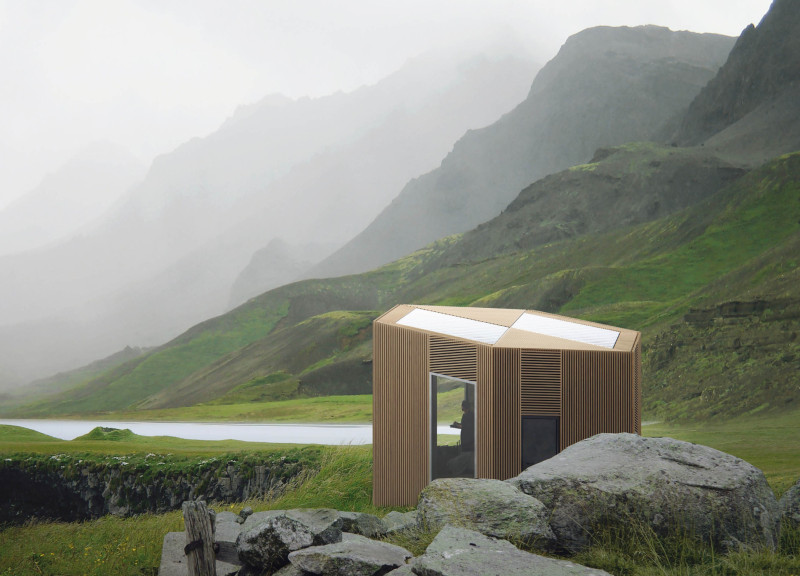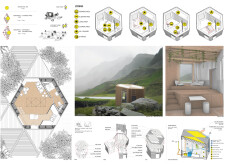5 key facts about this project
The design presents a modular residential unit aimed at rethinking compact living in urban areas. It combines efficiency with sustainability, addressing the needs of modern inhabitants. With a focus on functionality, the unit has areas for different activities, allowing for comfort in limited space.
Zoning and Layout
The arrangement incorporates specific zones for working, sleeping, and living, along with essential facilities such as a cooking area, WC/shower, and storage. This clear division enables a natural flow between different activities, giving residents the flexibility to use the space in diverse ways. Each area serves its purpose without interfering with the others, making the unit practical for various lifestyles.
Sustainability Features
Sustainability plays a key role in the design, evident through the inclusion of renewable energy systems. Wind and solar energy solutions provide clean energy, supporting the idea of self-sufficiency and reducing dependence on outside sources. The system also collects rainwater, offering a resource for potable needs after filtration. This focus on sustainability speaks to the growing need for environmentally mindful living.
Material Selection
Materials are chosen for their sustainability, durability, and local sourcing. The use of prefabricated structures and panels helps streamline construction, making the assembly process efficient. Important materials include metal sheets, OSB (Oriented Strand Board) walls, solar panels, wood sidings, wood furring strips, plywood, and wood fiber insulation. These selections contribute to the overall functionality of the unit while adhering to principles of sustainable building.
Structural Details
The floor plan is outlined at a scale of 1:50, featuring components such as OSB boards for the base and LVL (Laminated Veneer Lumber) for support. Wood fiber insulation plays a role in improving thermal performance. With careful attention to both materials and structural elements, the design effectively addresses the demands of urban living while providing a suitable solution for those seeking compact spaces.



















































